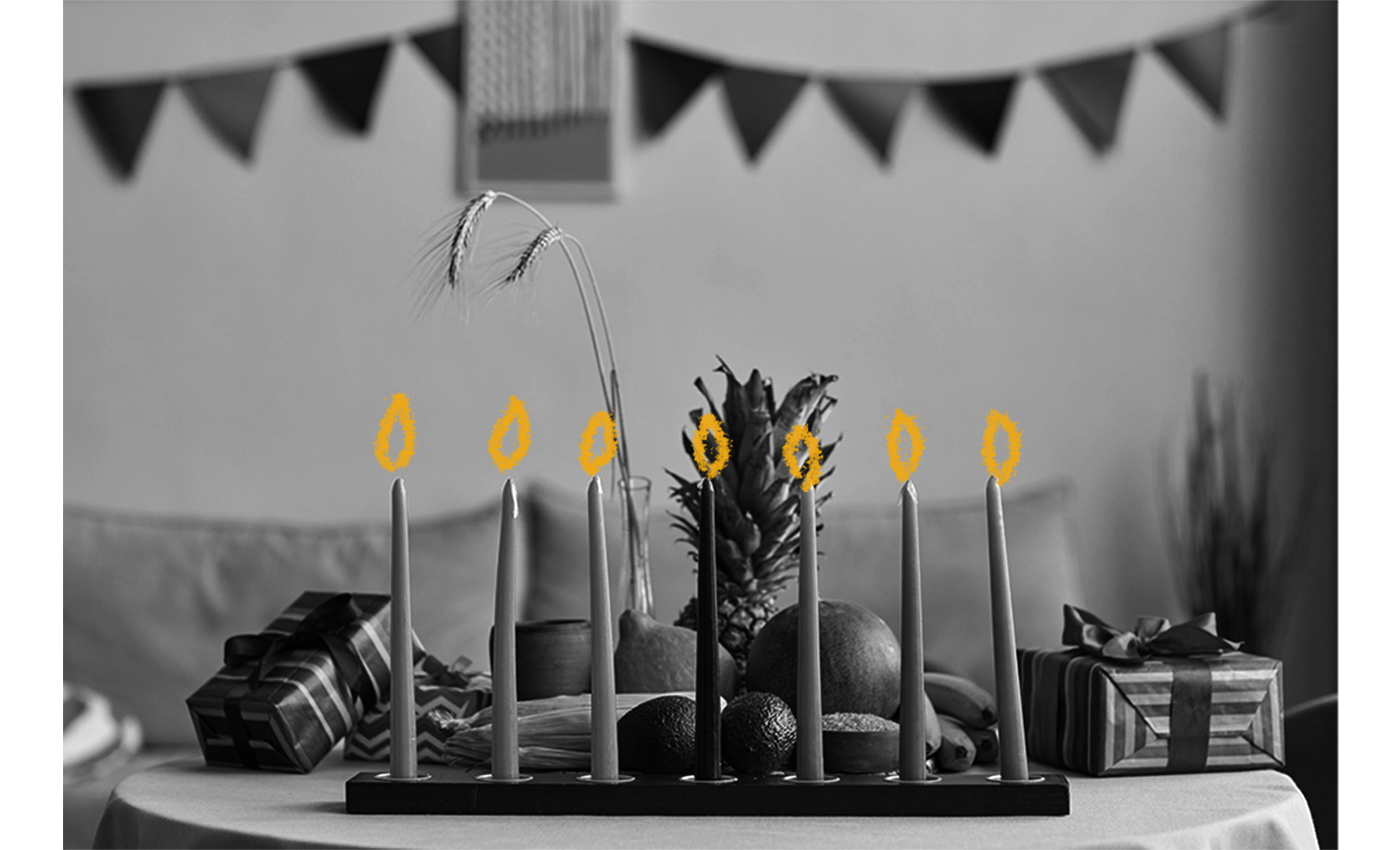Kwanzaa is a week-long holiday that was created in 1966 by Dr. Maulana Karenga, now a professor and chairman of Black Studies at California State University, Long Beach, shortly after he founded an organization called US. (It’s worth noting that there is some controversy around Karenga’s actions during the Civil Rights Movement.) Reportedly, he created Kwanzaa as a way to celebrate African American culture and bring African Americans together as a community after the Watts riots in Los Angeles. After researching African “first fruit” (harvest) celebrations, he combined various aspects of each to form the basis of the week-long holiday. The name Kwanzaa comes from the phrase “matunda ya kwanza” which means “first fruits” in Swahili. Each family celebrates the holiday differently, but most celebrations include songs and dances, African drums, storytelling, poetry readings, and a large traditional meal. On each of the seven nights, a child lights one of the candles on the Kinara (candleholder) and one of the seven principles is discussed. These principles are called the Nguzo Saba (meaning “seven principles” in Swahili). They were created by Dr. Karenga and represent values of African culture that contribute to building and reinforcing community among African Americans. They are: Unity (Umoja), Self-Determination (Kujichagulia), Collective Work and Responsibility (Ujima), Cooperative Economics (Ujamaa), Purpose (Nia), Creativity (Kuumba), and Faith (Imani). Kwanzaa also has seven symbols, and each represents a value or concept reflective of African culture. They are: Mazao (the crops, such as fruits, nuts, and vegetables), Mkeka (Place Mat), Vibunzi (Ear of Corn), Mishumaa Saba (The Seven Candles), Kinara (The Candleholder), Kikombe Cha Umoja (The Unity Cup), and Zawadi (Gifts). Additionally, Karamu, a special African feast, is held on December 31st. Kwanzaa begins on December 26th and ends on January 1st.

Your go-to guide for weird history facts
Subscribe to the FREE daily email that makes learning about history fun.


